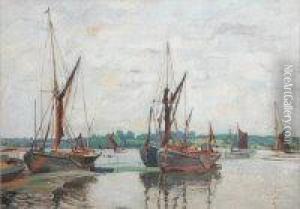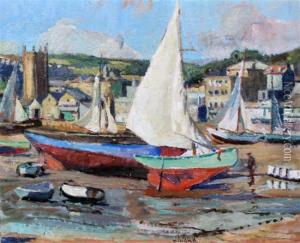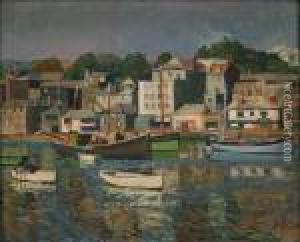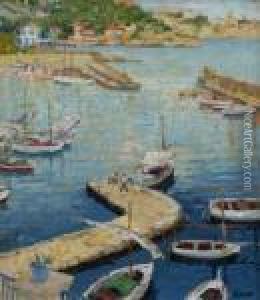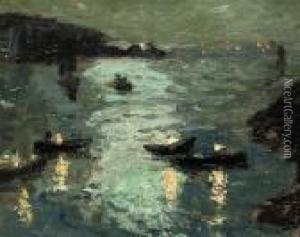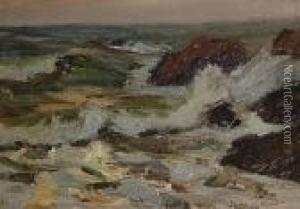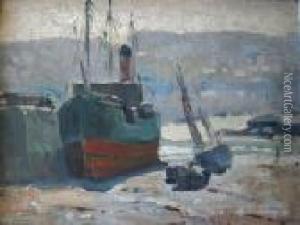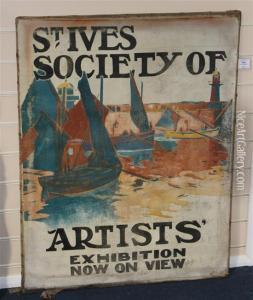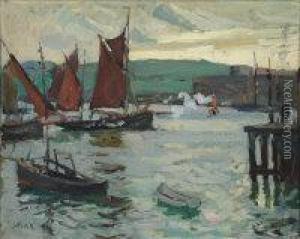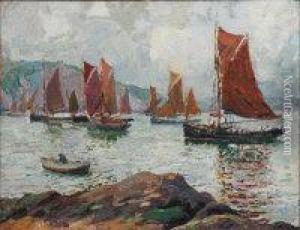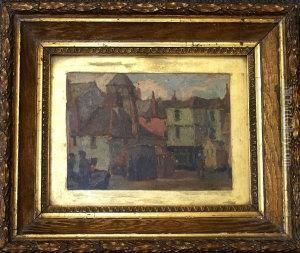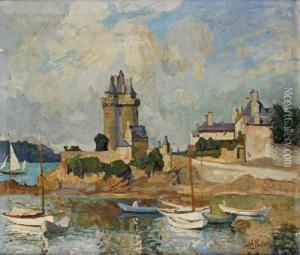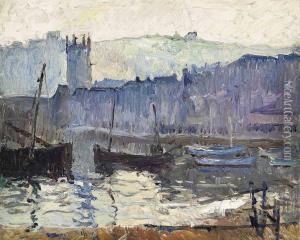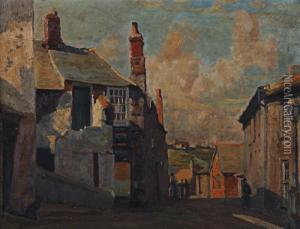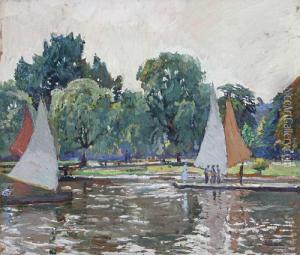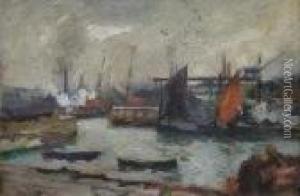John Anthony Park Paintings
John Anthony Park was a prominent British artist known for his vibrant and colorful landscape paintings. Born in Preston, Lancashire, England, in 1878, Park showed an early interest in art. He initially trained as a designer but soon shifted his focus to painting. Park's artistic career was interrupted by his service in World War I, where he was seriously injured. However, he returned to painting after the war and continued to develop his style.
Park was greatly influenced by the Impressionist movement and particularly admired the work of Claude Monet. He translated these influences into his depictions of the English countryside, coastal scenes, and urban vistas, which were characterized by their bold use of color and light. Park's paintings often captured the changing effects of sunlight and shadow, which added a dynamic quality to his work.
He spent a significant part of his career in St Ives, Cornwall, which was an artist's colony at the time. The natural beauty of the area, with its unique quality of light, provided endless inspiration for his paintings. Park became a central member of the St Ives art community, influencing many other artists with his work and approach to painting.
Throughout his career, Park exhibited his works widely, including at the Royal Academy of Arts in London. His paintings were well-received, and he gained a reputation as a skilled landscape painter. His contributions to the art world were recognized when he was elected to the Royal Institute of Oil Painters.
Park continued to paint well into his later years, passing away in 1962. His legacy is preserved in the collections of various galleries and in the continued appreciation of his work by art enthusiasts and collectors. John Anthony Park is remembered as an artist who captured the essence of the English landscape with a unique and expressive style that bridged traditional techniques with the newer Impressionist influences.
